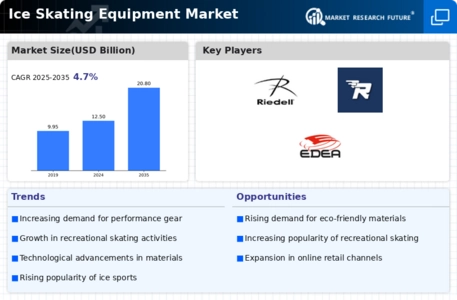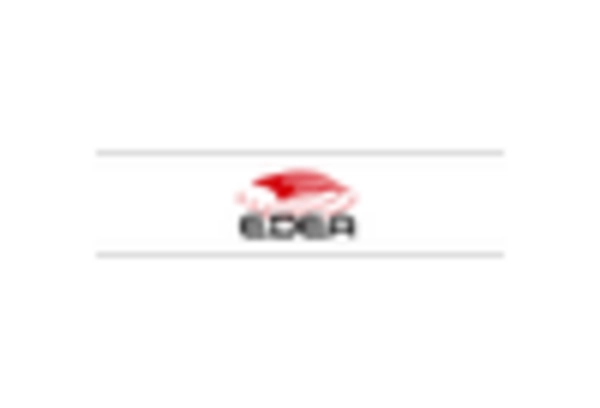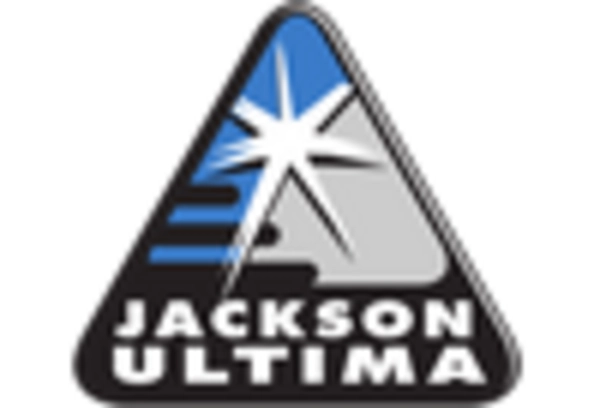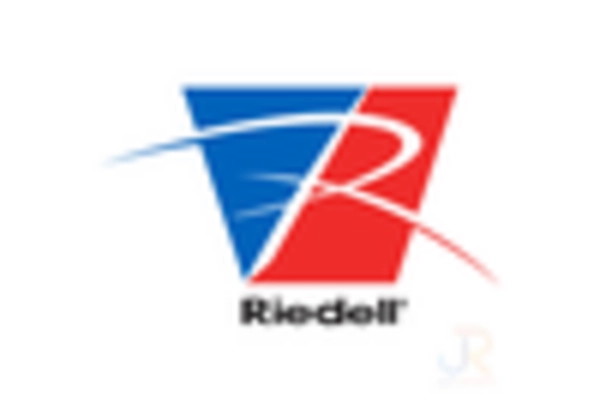Rising Popularity of Ice Sports
The Ice Skating Equipment Market is benefiting from the rising popularity of ice sports, which has led to increased demand for skating equipment. Participation in ice hockey, figure skating, and recreational skating has seen a notable uptick, particularly among younger demographics. According to recent statistics, the number of registered ice hockey players has increased by over 10% in the last three years. This growing interest is fostering a culture of ice sports, prompting families to invest in quality equipment. Consequently, manufacturers are responding by diversifying their product lines to cater to various skill levels and preferences, further stimulating market growth.
E-commerce Expansion in Sports Retail
The Ice Skating Equipment Market is witnessing a significant shift towards e-commerce, which is reshaping how consumers purchase skating gear. Online platforms provide a convenient shopping experience, allowing customers to compare products and prices easily. Recent data indicates that online sales of sports equipment, including ice skating gear, have increased by 30% in the past year. This trend is particularly beneficial for niche markets, where specialized equipment may not be readily available in local stores. As e-commerce continues to expand, it is likely to enhance market accessibility, driving sales and encouraging new participants to engage in ice skating.
Health and Fitness Trends Favoring Ice Skating
The Ice Skating Equipment Market is aligned with the growing health and fitness trends that emphasize active lifestyles. Ice skating is recognized as an effective cardiovascular workout that also improves balance and coordination. As more individuals seek enjoyable ways to stay fit, ice skating is emerging as a popular choice. Recent surveys indicate that over 60% of participants in recreational activities consider ice skating a fun way to exercise. This trend is likely to drive demand for ice skating equipment, as newcomers invest in skates and accessories to participate in this engaging activity. The market is expected to benefit from this health-conscious shift in consumer behavior.
Increased Investment in Ice Rinks and Facilities
The Ice Skating Equipment Market is positively influenced by increased investment in ice rinks and skating facilities. Governments and private entities are recognizing the value of promoting ice sports, leading to the construction of new rinks and the renovation of existing ones. This investment not only provides more opportunities for public skating but also supports training for competitive athletes. As more facilities become available, participation rates are expected to rise, subsequently boosting demand for ice skating equipment. The establishment of community programs and events further encourages engagement, creating a robust ecosystem that supports market growth.
Technological Innovations in Ice Skating Equipment
The Ice Skating Equipment Market is experiencing a surge in technological innovations that enhance performance and safety. Advances in materials science have led to the development of lighter and more durable skates, which improve maneuverability and reduce fatigue. For instance, the introduction of carbon fiber in skate construction has been noted to increase responsiveness. Additionally, smart technology integration, such as sensors that monitor skating technique, is becoming more prevalent. These innovations not only attract competitive skaters but also appeal to recreational users seeking improved experiences. As a result, the market is projected to grow at a compound annual growth rate of approximately 5% over the next five years, driven by these advancements.

















Leave a Comment